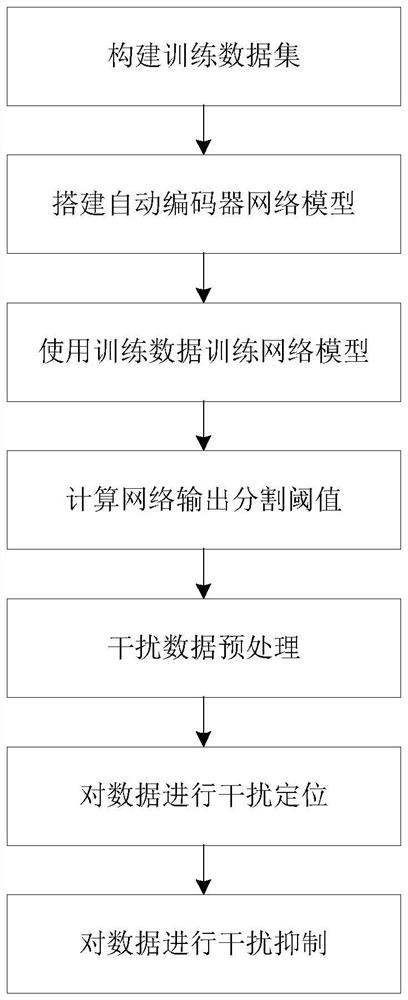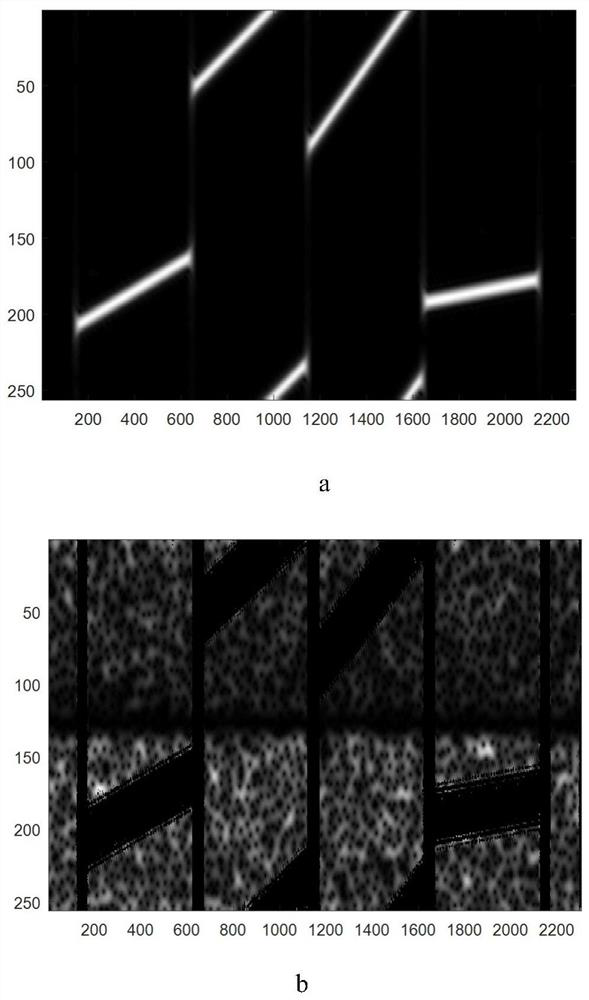Time-frequency domain interference suppression method based on automatic encoder
An automatic encoder and interference suppression technology, applied in neural learning methods, instruments, biological neural network models, etc., can solve the problems of inability to distinguish whether the echo is interfered, unable to suppress, and the target information is lost. It is difficult to extract frequency features and overcome the effect of rough precision.
- Summary
- Abstract
- Description
- Claims
- Application Information
AI Technical Summary
Problems solved by technology
Method used
Image
Examples
Embodiment Construction
[0038] The embodiments and effects of the present invention will be described in further detail below with reference to the accompanying drawings.
[0039] refer to figure 1 , the implementation steps of the present invention include the following:
[0040] Step 1, build a training dataset.
[0041] This example selects a scene similar to the one that needs to be interfered to suppress the radar echo to generate a training data set, and the specific implementation is as follows.
[0042] 1.1) Set the short-time Fourier transform parameters:
[0043] The window function adopts a Hamming window, the window length is set to 63, the step size is set to 1, and the number of fast Fourier transform points is set to 256. Put the radar echo data in;
[0044] 1.2) Perform short-time Fourier transform on the echo data in each azimuth to obtain the complex time-frequency domain data of the echo, and form the complex time-frequency domain data set Spec of the echo data;
[0045] 1.3) ...
PUM
 Login to View More
Login to View More Abstract
Description
Claims
Application Information
 Login to View More
Login to View More - R&D Engineer
- R&D Manager
- IP Professional
- Industry Leading Data Capabilities
- Powerful AI technology
- Patent DNA Extraction
Browse by: Latest US Patents, China's latest patents, Technical Efficacy Thesaurus, Application Domain, Technology Topic, Popular Technical Reports.
© 2024 PatSnap. All rights reserved.Legal|Privacy policy|Modern Slavery Act Transparency Statement|Sitemap|About US| Contact US: help@patsnap.com










